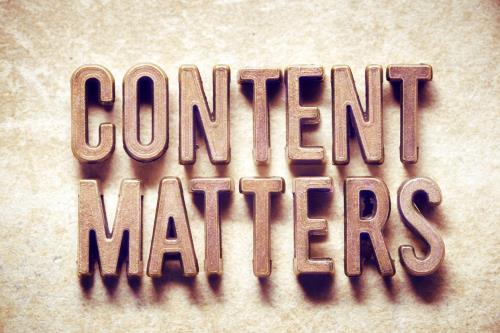Five Signs Sales Asset Management May Be for You
- Creating, managing, packaging, distributing and measuring the effectiveness of content can be a tremendous challenge
- Five sales content issues stand out as reasons to consider a technology solution
- Organizations must develop a rigorous sales content strategy that aligns across marketing and sales
The amount of content that a rep must search through to find the appropriate materials can be daunting. No matter the industry or the size of your sales force, the task of creating, managing, packaging and distributing content – and measuring its effectiveness – can be a tremendous challenge for both asset creators and consumers within the organization. Developing a rigorous content strategy built on a foundation of understanding the knowledge needs of sellers and buyers sets the stage for implementing technology that can truly accelerate productivity.

Though there is a wide variety of challenges that lead organizations to consider sales asset management solutions, the following five challenges stand out as compelling reasons to consider a technology solution:
Sales reps can’t find content. Reps are spending too much time looking for content – they desperately need a more effective way to find content more efficiently. A sales asset management solution not only enables reps to locate the right content, but also in many cases allows the content to find the rep within the context of the selling cycle through content tags or specifically built algorithms that automatically promote and push content to the reps based on the details of individual opportunities (e.g. sales stage, product). However, while these capabilities have amazing potential to improve rep productivity, if the content is still misaligned or irrelevant, the investment is lost.
Content is stored in multiple repositories and systems. Many companies store and create content in multiple repositories across the organization for a variety of reasons (e.g. global compliance, translated content, specific business needs). In addition, sales reps store and create content on their own devices. As a result, marketing and sales materials (e.g. presentations, templates, white papers) are being created in silos. A SAM solution can establish a single point of access to content by providing a centralized portal where reps can access the asset library anywhere and at any time – and creators can track usage and impact.
Content is outdated and unusable. Having an abundance of content is not necessarily a good thing. It often reflects a lack of understanding of buyer and seller content requirements. The result is that reps become confused about what to use or “reinvent the wheel” to accommodate what they actually need. SAM solutions can help by focusing on specific content to be used by specific sellers in specific situations. Reps no longer have to sort through long lists of irrelevant assets to find the one asset they need. SAM systems provide greater access, control and governance of the content – and confidence that only the most current and compliant versions are being used.
Reps lack an effective way to share exclusive content with buyers. Many reps can share content with buyers only through email. However, they want to be able to distribute and personalize content through a variety of delivery options, including mobile devices, presentation Web links, private portals and microsites. SAM solutions can enable reps to provide their customers with an individualized experience on multiple devices in multiple mediums, allowing them to build and distribute customized content (e.g. presentations, proposal responses) based on whom they are selling to and where they are in the sales process.
The organization has no ability to measure the impact of shared content. Sharing content through email limits a rep’s ability to understand which content was viewed, how much time was spent viewing it and what the recipient did with it. Analyzing external activity as well as understanding the internal application of the content (e.g. what content was used most frequently by winning reps in which deal stage) is beneficial. In addition, knowing which specific content can be attributed to won deals can provide prescriptive recommendations for future sales activity. SAM solutions can measure and track these activities within the sales force automation system at the opportunity level so that marketing and sales can focus their efforts on the most effective content.
Although these challenges are important to consider, technology can solve only part of the problem. In order to succeed, organizations must develop a sales content strategy that aligns across marketing and sales. But as a starting point, if these five content challenges resonate with you and your organization, it’s a good sign it may be time to think about enabling your sales team with a SAM solution.